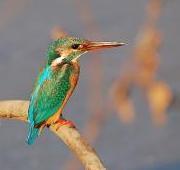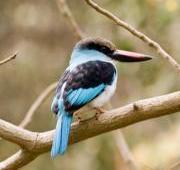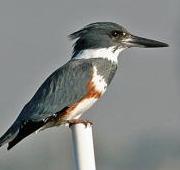 The kingfisher is a small to medium sized colourful bird generally found close to water.There are nearly 100 different species of the kingfisher bird found around the world.
The kingfisher is a small to medium sized colourful bird generally found close to water.There are nearly 100 different species of the kingfisher bird found around the world. Kingfishers live both in wetlands and woodlands worldwide, feeding mainly on fish but also insects, frogs and crayfish with those kingfisher species that live in the woodlands occasionally eating reptiles, birds and even small mammals.
Kingfishers live both in wetlands and woodlands worldwide, feeding mainly on fish but also insects, frogs and crayfish with those kingfisher species that live in the woodlands occasionally eating reptiles, birds and even small mammals.


Kingfishers nest in tree hollows and holes dug into the ground, which tend to be in river banks or at the sides of lakes. Kingfishers dig small tunnels with their nest at the end, which can range in length depending on the species. The giant kingfisher is known to dig tunnels that are over 8 meters long! Female kingfishers lay up to 10 eggs (although normally less), and both the male and the female kingfishers help to incubate the eggs, which hatch in between 3 and 4 weeks.
Kingfishers are well known for their brightly coloured feathers which range in colour from black to red to green. Some species of kingfisher have tufts of feathers on their heads which stick upwards, although many species of kingfishers have smooth, flat feathers covering their bodies.
Due to their generally small size, kingfishers have a number of predators wherever they exist around the world. The main predators of the kingfisher are foxes, raccoons, cats and snakes, but kingfishers are also preyed upon by other small mammals and large birds. The eggs of the kingfisher are also preyed upon by many of the kingfisher's predators.
Many species of kingfisher are considered to be threatened species as their numbers have been declining mainly due to habitat loss. These threatened species of kingfisher tend to be the kingfisher species that inhabit woodland and forests as their habitat is being destroyed due to deforestation which occurs in many areas around the world.

